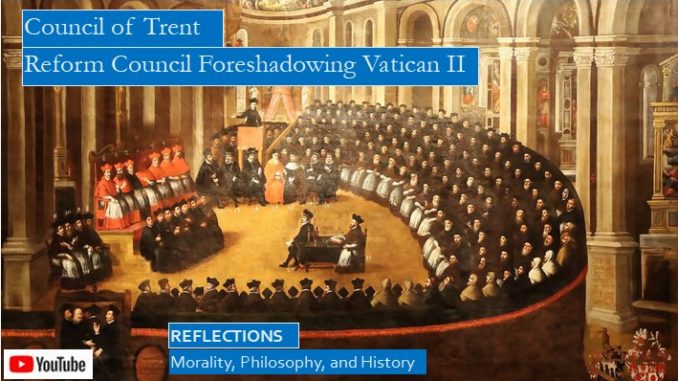
IMHO, you cannot truly understand the history and theology of the modern Catholic Church until you read John O’Malley’s excellent histories, Trent, What Happened at the Council, and What Happened at Vatican II.
When John O’Malley was a doctoral student in Rome from 1963 to 1965, he was able to attend some of the public sessions of Vatican II and many of the Vatican press conferences. He was able to incorporate some of these experiences in his doctoral thesis, and later wrote articles and taught classes in a Jesuit Seminary on the Councils of Trent and Vatican II.[1] He is the leading scholar on these two councils.
Please view our YouTube video, it includes information not in this blog: https://www.youtube.com/watch?v=Thq1blvzWHs&t=97s
Was the Council of Trent a reactionary council? This is a common perception, that the Council of Trent initiated the Catholic Counter-Reformation to defend the Catholic Church from the influences of the Protestant Reformation started by Martin Luther, and that the Vatican II Council was a rejection of Trent, steering the Catholic Church in a more liberal direction. Father O’Malley’s history leads to a different conclusion, that the actual Council of Trent, as opposed to the later impressions of Trent, is really a progressive council that is a precursor to Vatican II. Indeed, the documents of Vatican II and the subsequent Catholic Catechism both cite the Council of Trent extensively.
The post Reformation polemics are to blame for this misunderstanding of the nature of the Council of Trent. In Father O’Malley’s words, “When Pope Pius IV confirmed the council’s decrees, he forbade the printing of commentaries or notes on them without explicit permission of the Holy See.” The Pope really had no choice, the Catholic Church was besieged, had the Pope not restricted access to the minutes of the Council of Trent, protestants would have taken out of context and distorted the debates to discredit the Church. But this prevented balanced scholarship on Trent for four hundred years, until Pope Leo XIII opened the Vatican Archives in 1880.
Also, when he confirmed the decrees of the Council of Trent, Pope Pius IV established the Congregation of the Council that functioned for four hundred years, until the time of Vatican II, 1966. Many of these interpretations of the Council of Trent were more reactionary than the Council itself, partly in response to the polemic pressures encountered by the Catholic Church. In Father O’Malley’s words, “the Congregation’s decision promoted the impression that the council answered all possible questions, even on subjects it in fact never addressed, and that is left little room for change or further development and local adaptation. This impression became an integral element in the myths about the council.”
There have been misunderstandings of what Trent said about the Mass. Can the Mass be celebrated in the vernacular, or must the Mass be always celebrated in Latin? The Council of Trent did not forbid celebrating the Mass in the vernacular, and there was discussion that it should be permitted. But there was not any discussion by the Pope or the Congregation on celebrating the Mass in the vernacular, and indeed as this was an issue that divided Catholics and Protestants, celebrating the Mass in the vernacular become unthinkable, and so the myth grew that this was forbidden by Trent.
In Father O’Malley’s words, “the climate was marked by newly aggressive and intransigent attitudes. Impassible lines were drawn between Catholics and Protestants. Catholics were separated from others not only by fundamental teachings such as papal primacy the sevenfold nature of the sacraments but by other matters as well – priestly celibacy, Latin liturgy, wide canon of the Bible, the normative Vulgate, no Eucharistic cup, and so on. According to the ever more received wisdom, to compromise even on the slightest point threatened to undermine the whole edifice.”
Father O’Malley argues that the Council of Trent embraced a fortress mentality in the Catholic Church. “In reaction to the Reformer’s accusation that the church had early on so completely broken with the Gospel that its subsequent history was a distortion of it, Catholic apologists rushed to assert the church’s unbroken continuity with the apostolic era. Trent seconded this assertion. Trent thus helped develop the Catholic mind-set reluctant to admit change in the course of church history,” that the Catholic Church of today and yesterday and before is unchanged from the ancient Catholic Church of the apostles.[2]
QUICK SUMMARY OF PROTESTANT PROTESTS
Much later we will have a series of blogs on the Reformation itself, so we will only offer a quick summary of some of Luther’s views.
Luther’s biblical studies as a professor at Wittenberg caused him to question the Catholic teaching of his day, namely Romans 1:17, which we will quote from the NIV translation:
For in the gospel the righteousness of God is revealed—a righteousness that is by faith from first to last, just as it is written: “The righteous will live by faith.”[3]
The first edition of Luther’s famous vernacular German translation added a crucial word, “The righteous will live by faith alone.” Luther’s explanation was that was what the original Greek meant, but no Bible today adds the word ALONE, as it is not present in the Greek original.
Romans 5:1 that teaches that the righteous are justified by faith was another key verse for Luther. If we are to understand the meaning of these verses we must first try to understand the meaning of words such as faith, justification, righteousness, and many other words, and if people are without a common understanding of the vocabulary their discourses will be trains passing in the night. Scripture itself warns us to be careful when interpreting the letters of St Paul, perhaps these verses in 2 Peter peer forward to the disagreements of the Reformation:
“Our beloved brother Paul wrote to you according to the wisdom given him, speaking of this as he does in all his letters. There are some things in them hard to understand, which the ignorant and unstable twist to their own destruction, as they do the other scriptures.”[4]
O’Malley affirms that the delegates to the Council of Trent were not hostile to the doctrine of justification by faith, although they were not keen on adding the word ALONE to the verse. In Denzinger we have a remarkable joint declaration by the pontifical council and the Lutheran World Federation that the doctrine of justification by faith is a commonly held belief and should no longer be a divisive issue between Catholics and Lutherans.[5] Although we will not launch into a technical discussion defending this assertion, this joint declaration is not evidence of any significant changes in doctrine but is rather evidence of a desire to find commonalities rather than differences.
Closely related to the doctrines the Original Sin of Adam and Eve taking a bite out of the apple in the Garden of Eden. Some oversimplify this doctrine by saying that the Eastern Church teaches that man only inherits the propensity to sin from Adam, while the Western Church, both Catholic and Protestant, inherits the guilt of sin from Adam, which may be erased by Baptism, or not, depending on your denomination. This is at least half true, over the years I have read from several sources the argument that this divergence of interpretation was due to the inadequate Latin translation of Scriptures that St Augustine was using. The Vulgate came later, St Augustine and Jerome, author of the Vulgate, were contemporaries who actually wrote epistles back and forth. We quote directly from Jaroslav Pelikan’s explanation of St Augustine’s teaching:
“In the sin of Adam the entire human race sinned. In Augustine’s Latin Bible Romans 5:12 read, ‘Sin came into the world, and death through sin, and so death spread to all men, through one man, in whom all men sinned.’ Although this last clause really meant, ‘because all men sinned,’ the mistranslation ‘in whom all men sinned’ had led an earlier Western theologian to conclude that ‘all have sinned in Adam, as it were in the mass, for he himself was corrupted by sin, and all whom he begot were born under sin.’ Quoting these words, Augustine insisted that ‘all men are understood to have sinned in that first man, because all men were in him when he sinned.’ Just how they were in Adam and sinned in Adam, he usually explained by referring to the ‘carnal begetting’ by which their lives began. For ‘by the begetting of flesh . . . that sin is contracted which is original’ as distinguished from that which a man committed himself. Sin and death had been transmitted to all men from one man ‘by the propagation’ of the human race.’ “[6]
Luther and more so Calvin preached an extreme Augustinianism, including these teachings and also St Augustine’s positions against Pelagian, where he taught that we were saved by the overwhelming grace of God, that only the elect were predestined to be saved, and that the damned were doubly predestined.
There are two misconceptions of Lutheranism that I encounter constantly in my studies. The first concerns the status of the Book of James, which teaches that faith without works are dead. It is true that Luther did not comment on James, calling it an epistle of straw in opposition to the Pauline Epistles, but to the best of my knowledge no Lutheran Bible has ever excluded the Book of James. St Jerome doubted whether the Apocryphal books were scriptural, so the Lutherans had patristic tradition to support the exclusion of these books from the Old Testament. But there was little or no patristic discussion debating the status of the Book of James.
The other frequent misconception is that Luther’s writings define Lutheran doctrine. Luther did pen the Large and Small Catechisms, but the Augsburg Confession and most other Lutheran statements of faith were drafted by Phillip Melanchthon. Melanchthon was much more diplomatic than Luther, and whereas he was able to travel freely about Europe, Luther was restricted by his excommunication to the vicinity of Wittenberg.
PROCEEDINGS OF TRENT LOCKED UP IN THE VATICAN LIBRARY
Soon after the Council of Trent was concluded the council records were locked up and sealed in the Vatican, out of reach of scholars. The Catholic Church feared criticism, a valid fear, as no doubt the debates in the minutes would be distorted and magnified as faults and smeared across Europe. And the following centuries were not kind to the Catholic Church, many priests were murdered and many church properties were seized in the French Revolution, and although Napoleon signed a Concordat normalizing relations between the French state and the Church, he was not a true friend of the Catholic Church.
Since the Catholic Church was under attack and was defensive during the period of Trent, the decrees issued by the council tended to be more strident than the conclusions of the discussions in the sessions. After Trent was concluded and as the centuries passed, as the Catholic Church drew up its drawbridges to defend itself from its detractors, more and more of its reactionary policies were read back into the history of the Council of Trent.
There was a gradual thaw under the Popes in the late nineteenth century. This led to the opening of the minutes and correspondence of the Council of Trent in the Vatican library. A scholar named Hubert Jedin sifted through these mountains of documents, publishing a comprehensive four volume history of Trent, which because the basis for John O’Malley’s remarkable book on Trent.[7] This scholarship was also the basis for the pronouncements of the Vatican II Council and the modern Catholic Catechism many centuries later. Most of the theological pronouncements of Vatican II reference the Council of Trent. The many CCC references from DS 1500 through DS 1850 refer to the Denzinger paragraphs containing the decrees of the Council of Trent.
BACKGROUND OF THE COUNCIL OF TRENT
The Council of Trent was called in 1545, long after the Reformation began with Luther’s posting of his 95 Theses in 1517. Some Protestants attended some of the sessions, but by 1545 reconciliation was impossible, polemics were shrill. The Protestant doctrines by then were set in concrete, there were too many intervening events. Luther was nearing the end of his life and would pass away the following year, many princes in Germany were Lutheran, John Calvin had written his Institutes establishing what would become the Presbyterian Church, the Jesuit order had been established to battle for the Pope, and Henry VIII had divorced many wives, beheading some, leading to the establishment of the Anglican Church.
Medieval popes were reluctant to call church councils, fearful they would infringe on the power of the papal office. Pope Clement delayed endlessly when the Holy Roman German Emperor Charles V pushed for a church council, and his successor, Pope Paul III, cancelled several attempts to call a council for pressing political reasons, including Charles V’s war against the Lutheran Schmalkaldic League of German princes, whom he thought he force to attend if they were defeated in battle. By the time the first session of the Council of Trent was called interest in a church council had waned, consequently only 29 bishops attended initially. Attendance was never overwhelming. The Council of Trent met in three sessions called by three popes from 1545-1563, the last session had fewr than 300 bishops, many from Italy, still a small percentage of the 2,900 European prelates. The rulers of Europe also encouraged or forbade their bishops and abbots to attend, depending on the politics at the time, so the national mix of bishops differed in the three sessions.
The popes determined what would be discussed at Trent, which the attending bishops resented, and though the popes did not attend they insisted on sending frequent directives. One bishop quipped that at previous councils the Holy Spirit inspired from on high, but at Trent the Holy Spirit arrived in the weekly papal mail bag. The pope and bishops were also influenced by the Holy Roman Emperor Charles V as well as the successive kings of France and Spain.
The University system and scholastic and humanistic scholarship flourished in the century preceding Trent, and this directly affected the Council. Although attendance was slim, like Vatican II there were many prominent trained theologians influencing the debates at the Council of Trent. Indeed, at both Trent and Vatican II, the bishops were educated on the doctrinal debates in long educational sessions by these theologians.
Early on the Council of Trent decided that for every matter of doctrine that was promulgated they would afterward decide on an item of ecclesiastical reform. For the most part, each session built on the work of the prior session, and in spite of the fact that two generations of bishops and theologians participated in the three sessions, the result was a coherent statement of doctrines that would provide a good foundation for the Catholic faith and Vatican II.
THE COUNCIL OF TRENT IS CONVENED, DECREES ON SCRIPTURE AND TRADITION
So many years and popes and kings and emperors had passed since reformers first called for a church council to respond to the challenges of the Protestant Reformation that there was very little enthusiasm for a church council, only a handful of bishops attended the opening sessions, mostly Italian, some German, and a few French and Spanish bishops. Although is doubtful that Luther would have been conciliatory had the council been called earlier, he was in poor health by the time Trent was called, and he died shortly after Trent convened. The Catholic Church was now facing the second generation of Protestants, Protestant theology was set in concrete, which meant that a reconciliation with the Protestants would be next to impossible. Furthermore, in England and in Germany, many clergy had married, and many nobles and kings had gained vast wealth through seizing church property, and if they renounced Protestantism they might need to give up this vast wealth, and that was not going to happen. This is a most depressing thought, that perhaps justification of theft on a grand scale helped to solidify Protestant theology.
But many hoped for reconciliation. Pope Paul III instructed that the council the council could determine right doctrine, but the council could not criticize individuals. In O’Malley’s words, “only the doctrinal errors of the Reformers could be condemned, but not the Reformers themselves.” The Council of Trent was not intended to be a polemical council. Indeed, some of the bishops and theologians attending sympathized with the Lutheran positions.
Travel was slow, land travel was by horseback and carriage, unless you wanted to walk, so it was not unusual for delegates to regional councils to arrive over several months, and although attendance was never high in the first session of Trent, more bishops, abbots, royal envoys, and theologians arrived. The theologians who arrived were scholastically top-notch, so much so that the decrees issued by all three sessions of Trent would deeply influence Catholicism up to the present day. Vatican II elaborated on the decrees from Trent, but did not radically alter them.
A small incident in the beginning of the proceedings highlighted that the bishops attending were not sheep. The opening decree read, “This holy council of Tent, lawfully assembled in the Holy Spirit.” A motion was introduced that would amend this to include “representing the universal church,” as was done in the Councils of Constance and Basil. This phrase had not been included because the papal legates and the Pope himself feared a runaway council that would defy the authority of the Pope.
The papal appointed President of the Council Del Monte let it slip that the Pope needed to be consulted on this proposed changed. The bishops were not happy, verbal fireworks erupted. Only a third of the delegates voted in favor of the change, but “the vote was a wake-up call for the legates – the assembly would not meekly follow their lead.”
The Council had to decide on the agenda. Everyone agreed the Council of Trent had to address both questions of doctrine and reform of church practices. What should come first? Did the church abuses cause the problem of the Reformation? Or did bad doctrine cause the abuses? After debate, the council decided “almost unanimously to treat dogma and reform in tandem. Every decree on dogma would be accompanied by a decree on reform.”
The council delegates were pleased, the papal legates were pleased, but Pope Paul III was not. It took a month for the papal legates to convince the Pope in Rome to accept the principal of parallel decrees. This acceptance by the Pope that this would not be a rubber stamp council ensured that Trent would be an effective council.
Another reason Trent would be an effective council is, like Vatican II, it was first an educational council. Before the bishops and theologians could issue effective decrees on doctrine, they had to first educate themselves on the doctrinal issues that lie at the heart of the Reformations. Many theologians were monks, and few bishops and theologians had direct knowledge of the writings of the Reformers.
In matters of doctrine the council first appointed theologians to draft a series of questions regarding the doctrines of the Reformers. Then there would be debate defending and/or opposing these doctrines, debate that often days or weeks, first by the theologians, then by the bishops. Then a draft decree was formulated, which was debated, often redrafted, until a final vote was taken. [8]
The first doctrinal issue the Council wanted to address was the question of the Original Sin of Adam. But since the Reformers had directly attacked the authority of the Church., insisting doctrine could only be decided by SCRIPTURE ALONE, the Council decided to first answer these questions, Which books should be included in the Bible?
The early Church had decided by consensus which books would be included in the New Testament canon after the Marcion controversy, but the early Church had no reason to decide on which Old Testament books were considered canonical. Jerome, the early Church Father who translated the Latin Catholic Vulgate Bible from Hebrew and Greek, argued against including in the Old Testament canon the books written in Greek like Tobit, Judith, and Maccabees, as their canonicity was debated by early Jewish councils. Other Church Fathers such as St. Augustine argued for the wider canon including these disputed books. Catholic refer to these Old Testament books written in Greek as deutero-canonical, whereas Protestant refer to them as the Apocrypha. The apocryphal books are usually excluded from Protestant Bibles, although sometimes they are in an appendix, whereas they are included in Catholic and Orthodox Bibles.
Luther was not overly fond of the book of James, calling it a “gospel of straw,” as it proclaimed that faith without works is dead, apparently conflicting with the “faith alone” Lutheran slogan. The Book of Concord, the doctrinal summation of early Lutheran doctrine, does not mention the New Testament canon. However, the Protestant and Catholic canon have always included the same books.
The Council of Trent considered reaffirming the decision of the Council of Florence a century to adapt the wider Old Testament canon without taking a stand on the status of the deutero-canonical or apocryphal books. The decree promulgated simply lists the books of the Old and New Testament, including the deutero-canonical books.
Subsequent interpretations in later years became more strident. The inadequacies of the Vulgate translation were known, and after the council concluded it was updated based on more recent scholarship.
For all the ink spilled and arguments raged over the equality of Scriptures and Tradition over subsequent centuries, the decrees spend a paragraph (DS 1501) on this issue. The decree speaks of the “written books and unwritten traditions (O’Malley emphasizes, traditions with a small T) that have come down to us,” that the Church “receives and venerates with the same sense of loyalty and reverence all the books of the Old and New Testament, for the One God is author of both, together with all the traditions concerning faith and practice, as coming from the mouth of Christ or being inspired by the Holy Spirit and preserved in continuous succession in the Catholic Church.” The Council’s decree also stated that the Latin Vulgate translation was an authentic version, but it did not ban other Latin translations nor did it forbid vernacular translations. The decree also does not discuss the relative importance of Scriptures and Tradition.[9]
At Trent, the concise decrees were firmer than the discussions. Since the minutes of the council were sealed the Council gained a reactionary reputation that was distorted. Furthermore, in a bull in 1564 Pope Pius IV went further, restricting vernacular translations of the Bible and forbidding biblical commentaries unless they were approved by the Holy See.[10]
The bull of Pope Pius IV did not mention whether a vernacular missal would be allowed, which in time evolved into the false belief that Trent forbade celebrating the liturgy in the vernacular.[11]
ORIGINAL SIN AND JUSTIFICATION
The Council wanted to address Justification, a key issue with the Lutherans, but first they needed to address the doctrine of Original Sin of Adam when he and Eve ate the apple in the Garden of Eden. The Catholic position on these two important doctrinal issues both at the Councils of Trent and Vatican II were not as far apart as the polemicists on both sides would claim. Quoting O’Malley, “St Paul in Romans 5 and First Corinthians 14 taught that through Adam’s ‘Fall’ sin and death came into the world.” According to St Augustine, “Adam’s sin was transmitted from parents to children and affected all members of the human race. Although Christ redeemed the world from sin, concupiscence (tendency to sin) remained even in the baptized.”
Some Catholics attacked Luther’s teaching that the concupiscence of “Original Sin remained even in the baptized; that concupiscence was itself a sin in the full sense of the word rather than an inclination to sin, and that Luther insisted on the total corruption of human nature and the utter impotence of the human will regarding salvation.” The Council of Trent affirmed the Catholic teaching that baptism washed away the stain of Original Sin, that the concupiscence remaining in us is not actual sin but rather the tendency to sin, and that we do not share in the guilt of Adam. [12] The council decrees say that “concupiscence or the tinder of sin remains in the baptized. Since it is left for us to wrestle with, it cannot harm those who do not consent but manfully resist it by the grace of Jesus Christ.”[13] Included in the section of Original Sin was a short paragraph affirming the practice of infant baptism.
The Council of Trent affirmed justification through faith, but not Luther’s extreme position of justification through faith ALONE. The decrees on Justification from Trent in Denzinger run well over a dozen pages and took seven months for the Council to draft and several pages for O’Malley to summarize, so read O’Malley on this topic. We plan to cover justification in detail much later when we review that section of the Catholic Catechism.
REFORMS AND SACRAMENTS AND POLITICS
Decrees on doctrine had been pronounced, now the Council took up a reform issue that was a sensitive issue because it encroached on the papal power to grant dispensations. The Council passed a decree requiring that if a bishop was drawing income from multiple bishoprics, he should resign from all but one, and that the bishop should visit every church in his diocese every year, and that preaching and the care of souls would be his primary responsibility. Pope Paul III eased tensions when he issued a bull saying he would no longer grant dispensations allowing multiple bishoprics.
Luther had argued there were only two sacraments, Baptism and the Eucharist. In response, Trent affirmed Catholic teaching that Jesus instituted all seven sacraments. O’Malley writes that the Council made these points, “the sacraments are not equal in dignity, they are necessary for salvation,” they are more than symbolic, they are “efficacious signs” the confer grace, “they must be conferred by the proper minister and be performed using the proper rites.”[14]
Then one of the bishops died from typhus. Everyone was worried that the plague would strike the town of Trent, so they quickly decided to reconvene in Bologna in 1547, not near German lands like the emperor demanded, but in the Papal States. This was a mistake. Emperor Charles V was furious, so was the pope, though he calmed down, many bishops boycotted. The remaining bishops discussed the sacraments for a few years, the Pope bade the Council to dither, nothing was accomplished. Politics intervened, the Pope’s son was brutally assassinated, the emperor was suspected, the pope died, but then Pope Julius III was elected, who made peace with Emperor Charles and reconvened the Council at Trent in 1551.
The emperor twisted the arms of his Lutheran princes to send delegates to the Council, but their polemic positions were too concrete. They came, they bickered, they left.
The Council continued the discussions in Bologna on the sacraments. They discussed offering the cup to the laity, though no decision was made. Since Luther had attacked the sacramental system of the Catholic Church, the Council issued decrees on all the sacraments, which we will study later when we review the Catholic Catechism.
The Council decrees upheld the transubstantiation of the bread and the wine into the Real Presence of the body and blood of Christ, and affirmed the popular adoration of the Eucharist. Adults were obligated to receive the Eucharist at least annually, with confession of serious sins required before communion.[15]
O’Malley quotes the Council decrees as it “enjoins, exhorts, begs, and entreats” all Christians to “believe and reverence these sacred mysteries of His body and blood with such constancy and firmness of faith, such dedication of mind, and such devotion and worship that they may be able to receive frequently this life-support bread. May it be for them truly the life of the soul and the unending health of the mind; thus, strengthened by its force, may they be able after the journey of this wretched pilgrimage to reach the heavenly fatherland, there to eat without end the same bread of angels that they now eat beneath the sacred veil.”[16]
Politics heated back up, France declared war, allying with the Protestants, the emperor lost, the emperor abdicated, splitting the Hapsburg domains in two, the pope died, the next reactionary pope caused problems then died, the Council of Trent was suspended for a decade, and you can read all this continuing shaggy dog history in O’Malley.[17]
THE THIRD PERIOD OF THE COUNCIL OF TRENT
O’Malley speculates that the Council of Trent may have concluded a few years after it started had they not gotten spooked by a possible plague and tried to reconvene in Basel. But now seventeen years after it started the final session of the Council convened seventeen years later, and like the first session very few bishops came when the council was called, but by January 1562 about a hundred bishops arrived, more would come, and this final third session was the best attended session of the council.
The politics and personalities favored the Council. The next pope, Pius IV, was more amenable, , and the Hapsburg Emperor Ferdinand and the Hapsburg King Phillip II of Spain supported the Council. The teenage king of France was under a regency by the queen assisted by the DeGuise family, and France was not at war with anyone. Cardinal Charles DeGuise was a leading voice in this final phase of the Council, meaning that the Italians were not the only active participants. Cardinal Marone, a curial reformer and accomplished diplomat, was appointed chief papal legate after the original legates passed away.
The reform agenda for this session of the council centered on the role of the bishops and the clergy. The issues on the role of the bishops were contentious and split and deadlocked the council, it took Marone’s diplomatic skill to come to some compromises, and O’Malley describes in detail the fascinating politics and history behind these disputes. The first session had passed what was called the “little solution” to the question on whether bishops should reside in their diocese, at issue was the papal practice to grant dispensations to these requirements to family members and favored bishops and cardinals. The reform party wanted to make the bishop’s residency a divine ordinance or matter of conscience rather than a matter of canon law so the Pope could not grant a dispensation. The compromise that the bishop’s main duty was to care for the souls of his flock. O’Malley notes that even with this compromise the bishops knew they were required to live in their diocese.
Another related issue was forbidding the bishops and cardinals from holding multiple bishoprics, which meant they could enjoy the income from multiple dioceses, which made some of the wealthiest men in Europe. Marone persuaded Pope Pius IV to accept this reform, and the wealthiest cardinal warned that this would cost Marone in the next papal conclave, a promise that was kept.
The council also worked on the job description of the bishop, in addition to caring for the souls of the parishioners in his diocese he was required to preach, hold regular synod meetings with the clergy in his diocese, visit the churches, schools, hospitals and other institutions in his diocese, and care for these meant that the Catholic Church renovated many of the churches in Europe. The council strove to increase the education of the clergy, each diocese was required to establish a seminary for those upcoming priests who could not afford to attend the universities or the Jesuit schools.
The Council addressed the problem of clandestine marriages where the husband and wife exchanged vows in private, but the husband denied taking these vows when little Johnny and Janie came into the world. Also, a kidnapper could not marry his captives before she was released, and after that, only with her free consent. Marriages would not be considered valid unless they were witnessed by a priest, and a lasting consequence is that in the decades after Trent more and more marriages were performed in the Church rather than at home.
Favorable discussions were held regarding administering the Eucharistic cup to the laity and permitting clergy to marry, but the Council took no action on these issues.
Cardinal Marone appointed a special commission under Charles Deguise to work on some final issues the Council still had to address. Originally he had a week and a half to work on them until word came that the Pope was on his deathbed. If the Pope died the Council would once again be suspended, so in less than two days this special commission drafted and the Council approved the remaining decrees. These decrees included statements that Purgatory indeed existed and it was beneficial offer prayers to souls in purgatory, that the veneration of saints and images was encourage, indulgences were allowed, and decrees were issued regarding fasting, the breviary, and the missal.[18]
THE COUNCIL OF TRENT AFTER TRENT
From these blogs we hope that O’Malley has provided persuasive arguments that that Trent was a progressive rather than a reactionary council. The decrees of Trent form the core of the decrees of Vatican II, the Catholic Catechism footnotes in the DS 1500’s are from the decrees of Trent. Many topics were on the table and discussed by the Council and the Popes, including clerical celibacy, offering the cup to the laity, vernacular translations of the Bible, but after the council these discussions were closed and the gates were raised and the moats were filled around the Catholic Church as it faced new hostilities from the Protestants and unforgiving history.
In one respect the Council of Trent was conciliatory, the original instructions were that the decrees of the council should not be critical of any individuals but should rather provide corrections to incorrect doctrine.
On the other hand, the decrees of Trent with their repeating anathemas, as in whoever believes this or that, let him be anathema, whereas Vatican II is much more pastoral and respectful of other religious traditions. But Trent was following time honored practice, many decrees of preceding councils used this anathema formula, notably the Fifth Ecumenical Council who pronounced anathemas on the monophysites, and when St Cyril for the Fourth Ecumenical Council pronounced anathemas against Nestorius. The decrees of Trent by necessity were a condensation of the Council discussions, and this anathema format made them more strenuous and stricter than the original discussion.
Pope Pius V, the Pope following the council vacuumed up whatever documents he could regarding the Council of Trent and locked them up in the Vatican library away from the preying eyes of scholars for four hundred years, until Pope Leo XIII opened the archives to scholars in 1880. Only then could an informed history be written of the Council of Trent by Hubert Jedin. This four-volume history was published between 1951-1976, which was main source used by O’Malley.
Not only did Pius V hide the history and proceedings of the Council of Trent in the Vatican Library, he forbade anyone to publish commentaries on the Council, leaving this job of interpretation to the Congregation of the Council whose members were Cardinals from the Curia of Rome. These interpretations and other decrees from Rome at this time were reactionary. They forbade the reading of the Bible by the laity without the permission of the bishop, they gave the impression that vernacular translations were forbidden, the Roman rite was enforced unless another local rite had been in use for two hundred years.
As O’Malley puts it, “the climate was marked by newly aggressive and intransigent attitudes.” Hard lines were drawn between Catholics and Protestants. “Catholics were separated from others not only by fundamental teachings such as papal primacy and the seven-fold nature of the sacraments but by other matters as well – priestly celibacy, Latin liturgy, wide canon of the Bible, the normative Vulgate, no Eucharistic cup, and so forth.” These differences came to define who Catholics were, to compromise on these matters would mean Catholics would lose their identity. “To compromise on even the slightest point threatened to undermine the whole edifice.”
The Council of Trent with the new Jesuit order also started many positive trends in the Catholic Church. O’Malley also wrote an excellent history of the Jesuit Order. Many new churches were built and renovated. There was a flowering of public preaching among the monks, priests, and bishops. The seminaries founded after Trent and the Jesuit schools greatly increased the learning and effectiveness of the clergy over the coming centuries. Everyone understood that bishops should live in their diocese, visit their churches, and preach and care for their flock. The abuse of multiple benefices was eventually phased out.[19]
[1] John O’Malley, “What Happened at Vatican II” (Cambridge, Massachusetts, The Belknap Press of Harvard University Press, 2008), Preface.
[2] John O’Malley, “Trent, What Happened at the Council” (Cambridge, Massachusetts, The Belknap Press of Harvard University Press, 2013), pp. 267-274.
[3] https://www.biblegateway.com/passage/?search=romans+1%3A17&version=NIV
[4] https://www.biblegateway.com/passage/?search=2+peter+3%3A15-16&version=NRSVCE
[5] Heinrich Denzinger, Compendium of Creeds, Definitions, and Declarations on Matters of Faith and Morals, 43rd Edition, edited by Peter Hunermann (San Francisco, Ignatius Press, 2012), paragraphs 5073-5074 and 5081, pp. 1129-1130, 1136-1137.
[6] Pelikan vol. 1, pp. 299-300.
[7] John O’Malley, Trent, What Happened at the Council, pp. 10-11.
[8] John O’Malley, Trent, ‘What Happened at the Council’, pp. 1-19, 78-102.
[9] John O’Malley, Trent, ‘What Happened at the Council’, pp. 77-102, and Denzinger, Compendium of Creeds, paragraphs 1501-1508, pp. 370-372.
[10] John O’Malley, Trent, What Happened at the Council, 266-267
[11] John O’Malley, Trent, What Happened at the Council, 269
[12] John O’Malley, Trent, What Happened at the Council, pp. 130-104.
[13] Denzinger, paragraph 1515, p.373.
[14] John O’Malley, Trent, What Happened at the Council, pp. 116-121.
[15] John O’Malley, Trent, What Happened at the Council, pp. 121-147.
[16] John O’Malley, Trent, What Happened at the Council, 148, he uses a different translation than Denzinger, paragraph 1649, p. 397.
[17] John O’Malley, Trent, ‘What Happened at the Council’, pp. 157-162.
[18] John O’Malley, Trent, ‘What Happened at the Council’, pp. 163-247.
[19] John O’Malley, Trent, What Happened at the Council, pp.248-275.

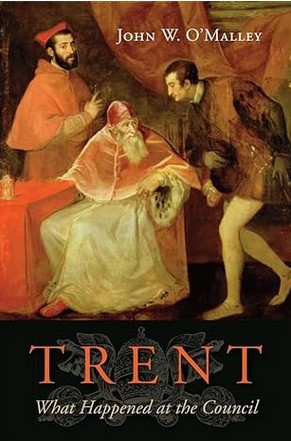
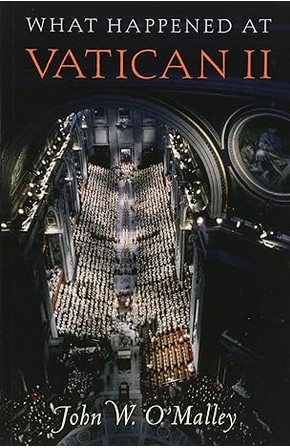
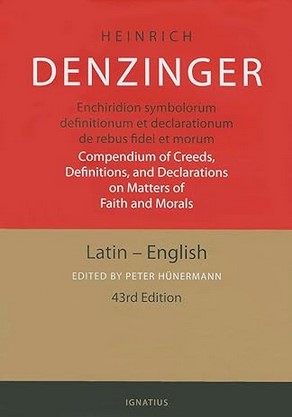
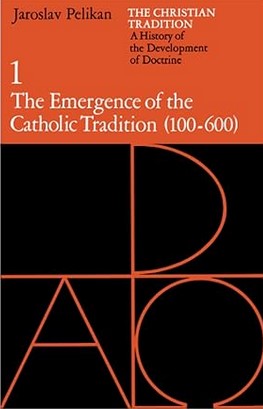
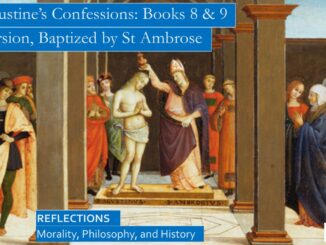
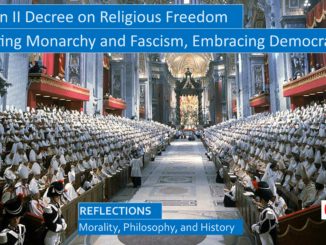
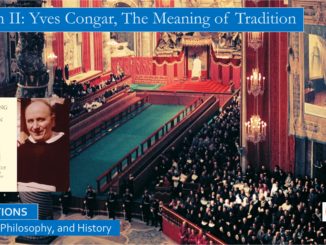
4 Trackbacks / Pingbacks